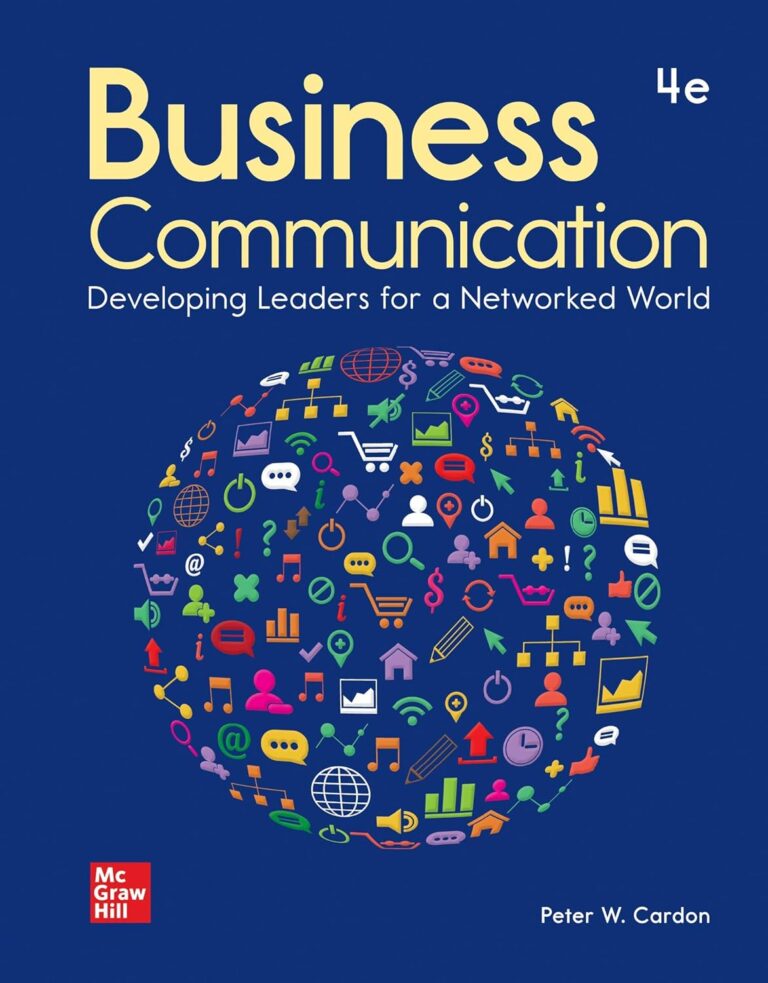Business Communication Developing Leaders For A Networked World Pdf

Global corporations are scrambling to adapt leadership development programs for a hyper-connected, digitally-driven world. A critical need has emerged for resources and strategies that can effectively cultivate leaders ready to navigate the complexities of networked organizations.
This article explores the urgent demand for revised business communication strategies and leadership frameworks, highlighted by the growing interest in resources like a PDF titled "Business Communication: Developing Leaders For A Networked World." The focus is on how companies are actively seeking and implementing new approaches to train leaders who can thrive in this environment.
The Networked World Demands New Leadership Skills
The rise of remote work, global teams, and constant digital interaction necessitates a leadership style vastly different from traditional models. Hierarchical structures are giving way to more fluid, collaborative networks. Leaders must be adept at communication, collaboration, and influence across digital platforms.
The challenge is significant. Deloitte's "Global Human Capital Trends" report consistently emphasizes the need for organizations to invest in leadership development to address skills gaps and prepare for future disruptions. The report reveals that only a small percentage of companies feel confident in their leaders' ability to navigate complexity and ambiguity.
Key Areas of Focus in New Leadership Programs
Companies are rapidly updating their leadership programs. They are prioritizing specific skills essential for navigating the networked world.
Digital Communication Proficiency: Leaders must master a range of digital communication tools and techniques. They need to effectively convey information, build relationships, and manage teams across various virtual channels.
Cross-Cultural Collaboration: Globalization requires leaders to be culturally sensitive and adept at working with diverse teams. Understanding different communication styles and cultural norms is essential for building trust and fostering effective collaboration.
Data-Driven Decision Making: The abundance of data requires leaders to analyze information and make informed decisions. They must be able to interpret data, identify trends, and use data to drive strategic initiatives.
Adaptability and Resilience: The pace of change demands leaders who are adaptable, resilient, and capable of navigating uncertainty. They must be able to embrace change, learn quickly, and bounce back from setbacks.
The Role of Resources Like "Business Communication: Developing Leaders For A Networked World"
The increasing demand for resources like the PDF "Business Communication: Developing Leaders For A Networked World" reflects the urgent need for practical guidance and frameworks. These resources often provide actionable strategies, case studies, and best practices for developing leaders who can effectively communicate and lead in networked organizations.
While the specific content of the PDF requires examination, the title itself underscores the core challenges faced by organizations. It focuses on business communication as a critical skill for leadership development, especially in a networked world.
Examples of Companies Adapting Their Programs
Several major corporations have publicly announced revamped leadership development initiatives. Microsoft, for example, has invested heavily in programs that focus on developing digital fluency and inclusive leadership. They are also promoting strategies that cultivate agility across their leadership teams.
Unilever has implemented global leadership programs focused on sustainability and purpose-driven leadership. These programs emphasize collaboration and communication across diverse cultural contexts.
These adjustments typically involve incorporating digital tools and technologies into the learning experience. They also rely on fostering a culture of continuous learning and feedback.
Challenges and Obstacles
Despite the growing recognition of the need for change, significant challenges remain. Many companies struggle to effectively measure the impact of their leadership development programs.
Resistance to change from established leaders can also hinder progress. Implementing new approaches often requires a cultural shift within the organization.
Furthermore, adapting programs to meet the unique needs of different business units and geographic regions can be complex. A one-size-fits-all approach is rarely effective.
Next Steps and Ongoing Developments
The evolution of leadership development is an ongoing process. Companies must continuously assess their programs and adapt to the ever-changing demands of the networked world.
Organizations should actively seek out and evaluate resources like the PDF "Business Communication: Developing Leaders For A Networked World." They must adopt frameworks that can effectively cultivate leaders who possess the skills and capabilities needed to thrive in this environment.
The focus should be on creating a leadership pipeline that is equipped to navigate complexity, foster collaboration, and drive innovation in a rapidly evolving global landscape. The urgency of the situation demands immediate and decisive action.

















